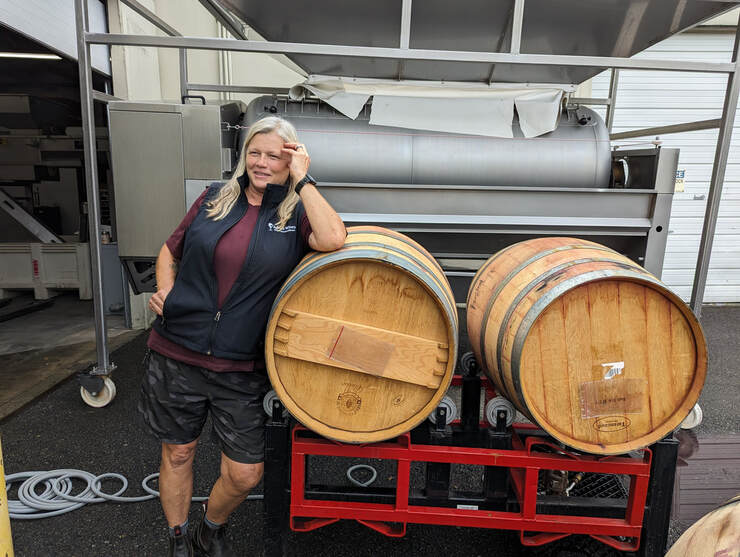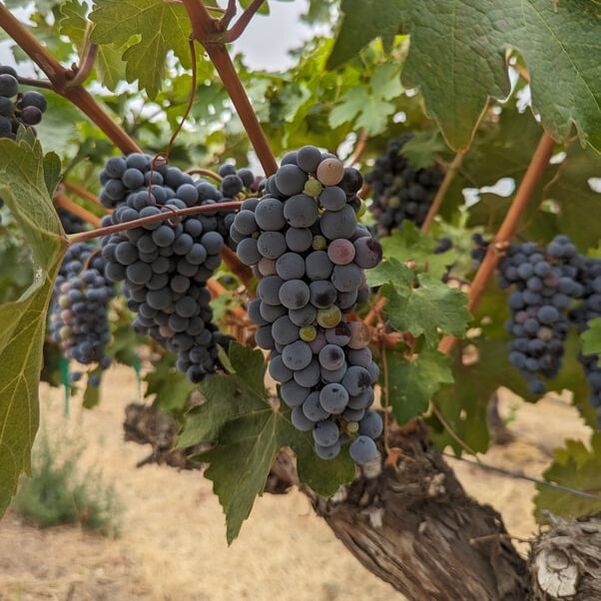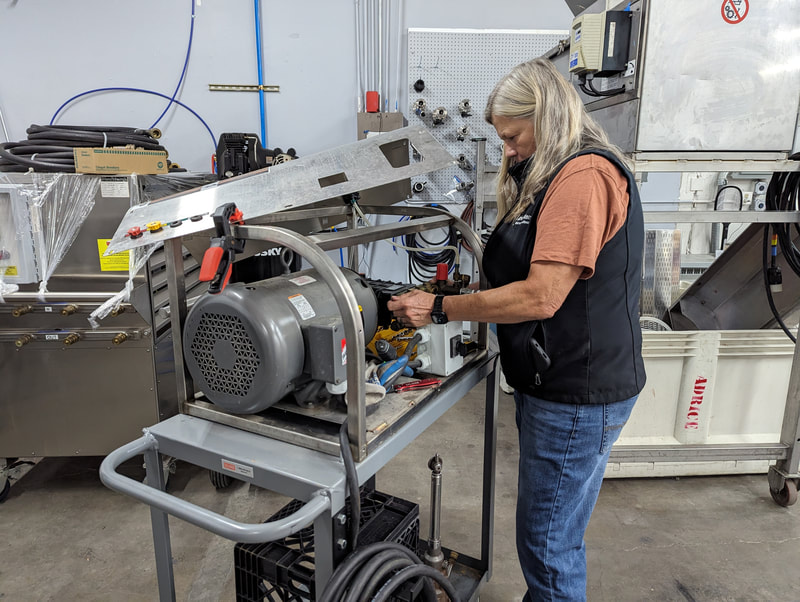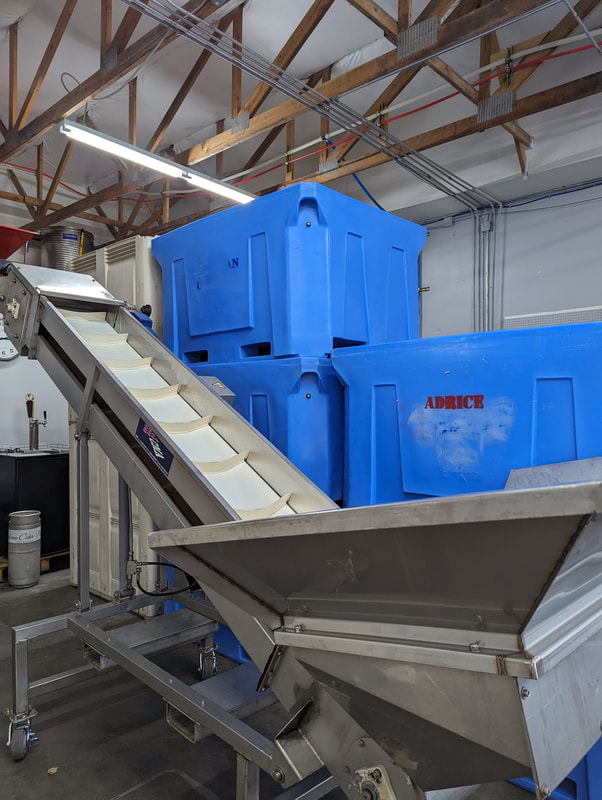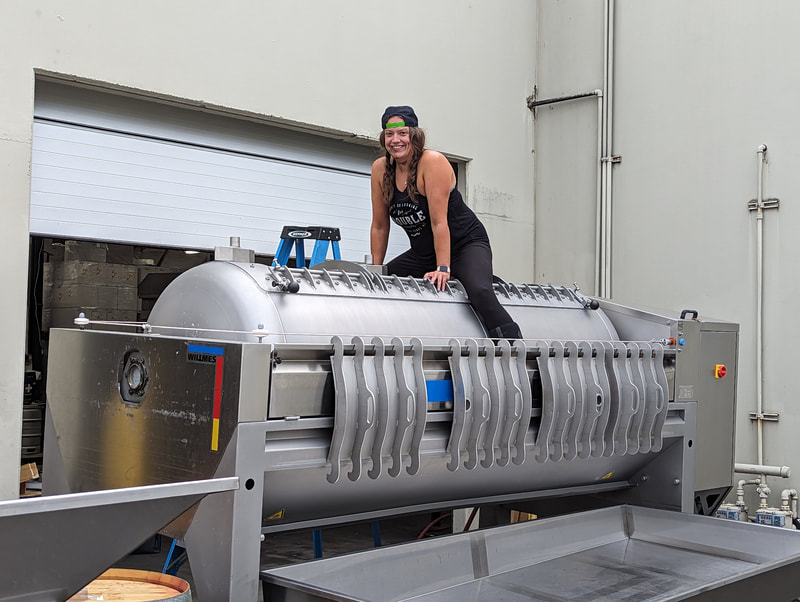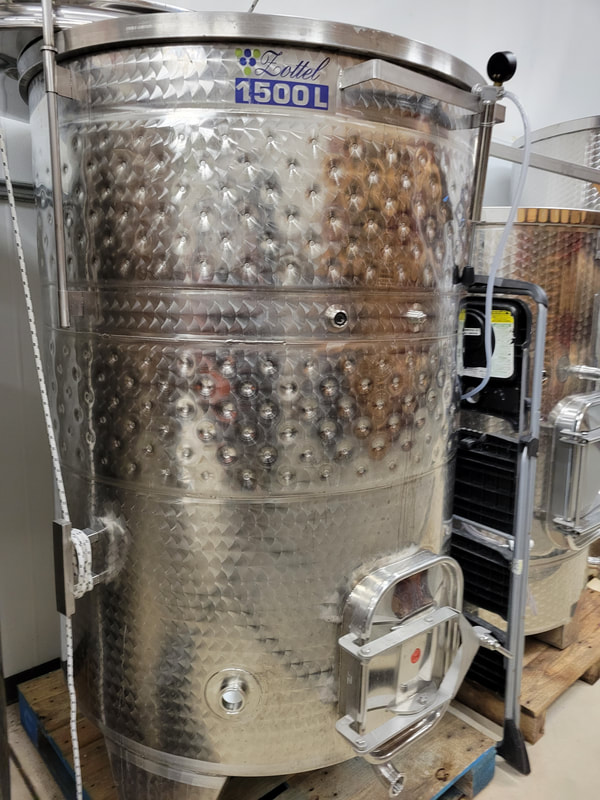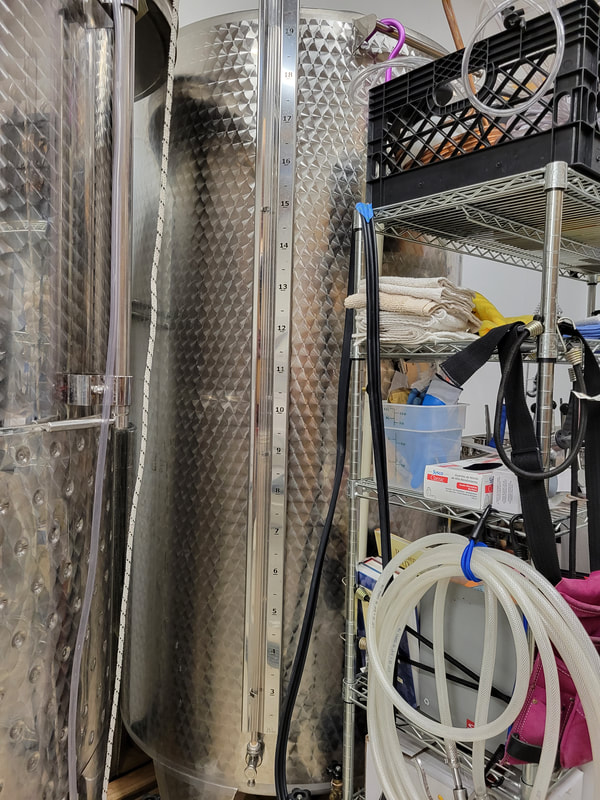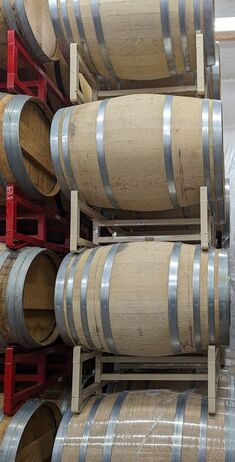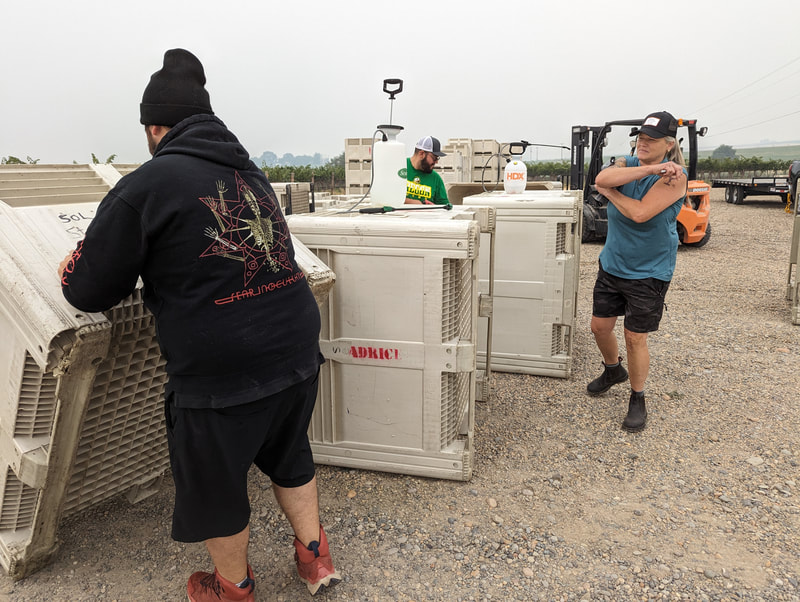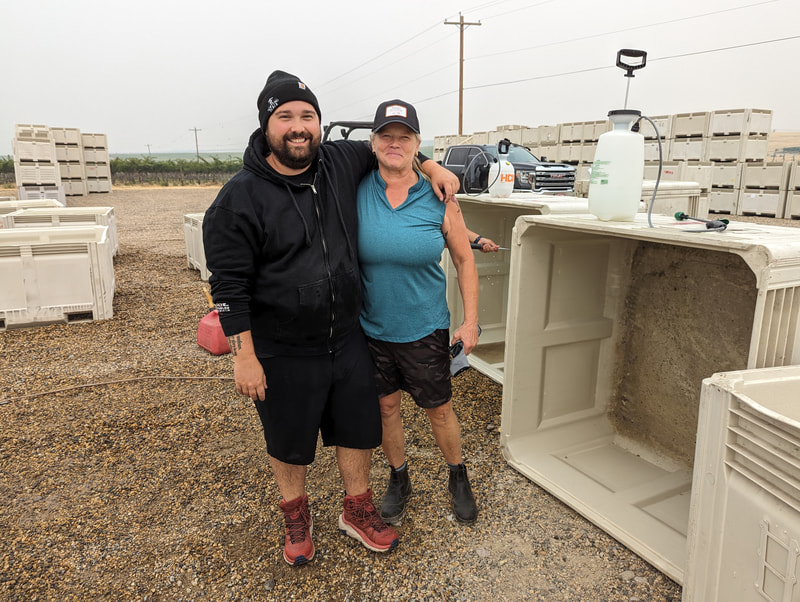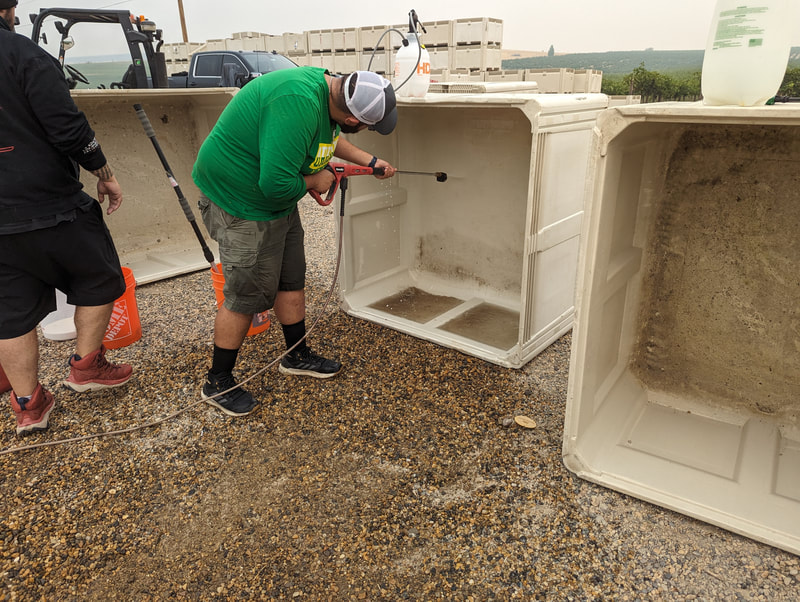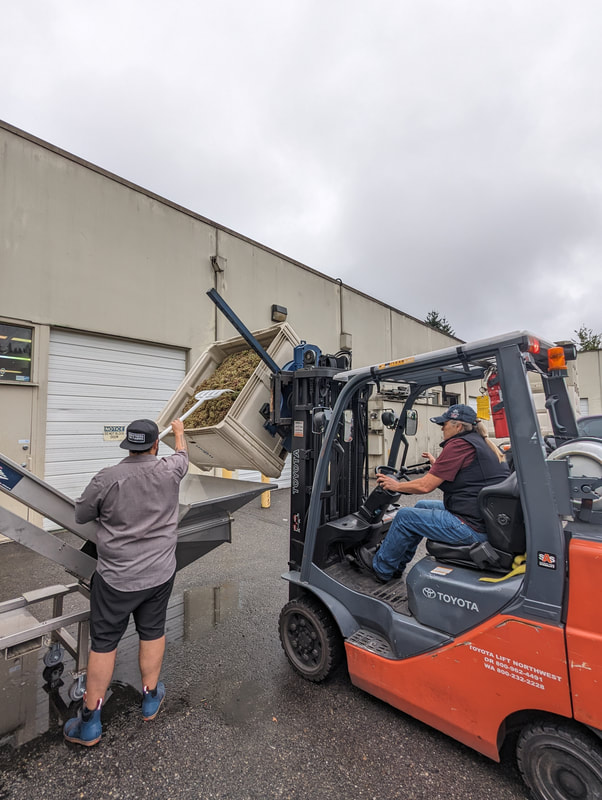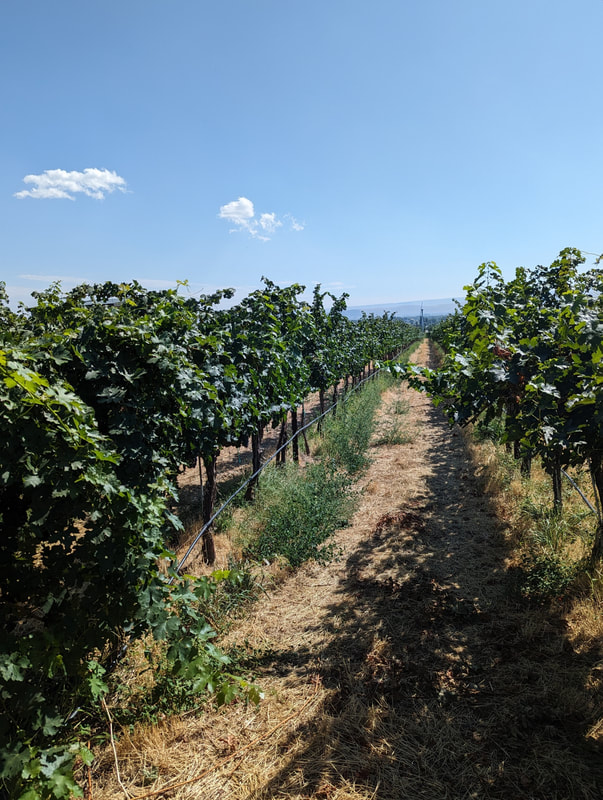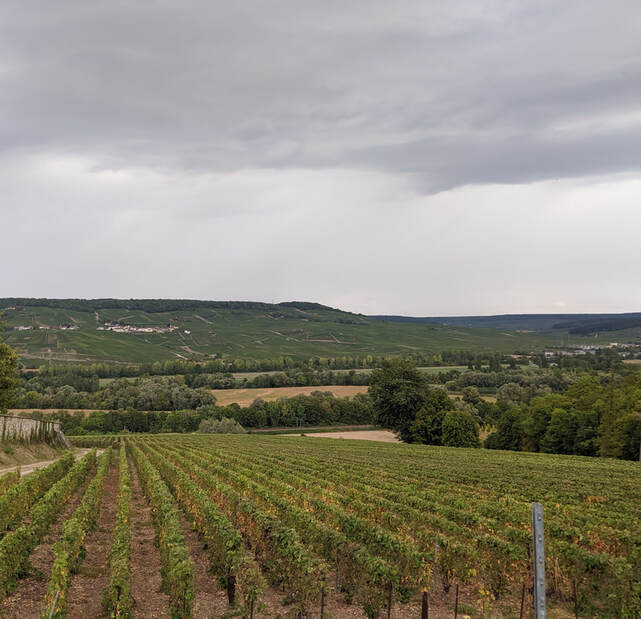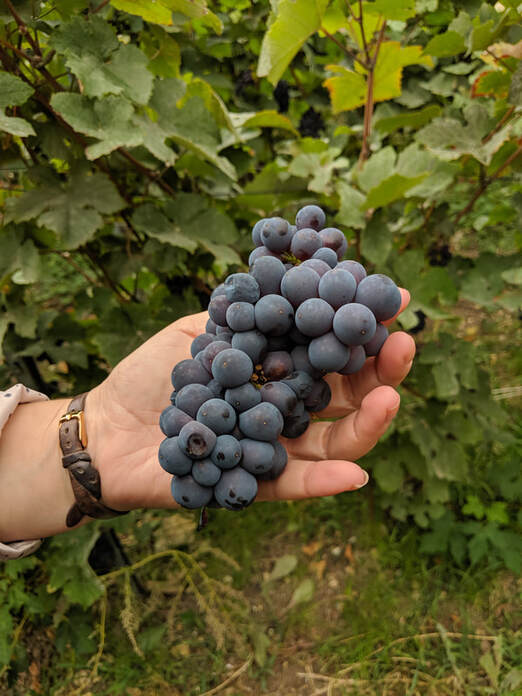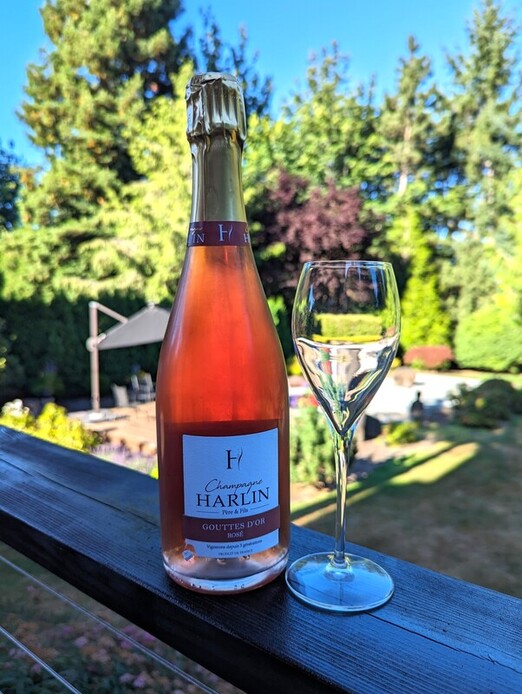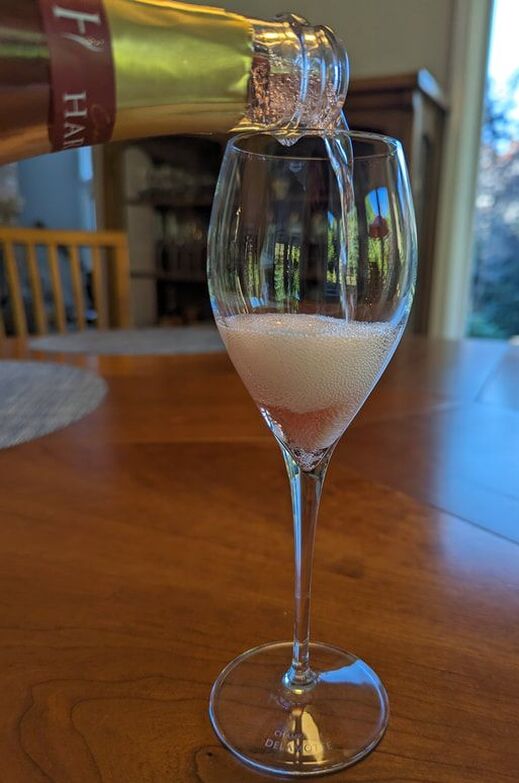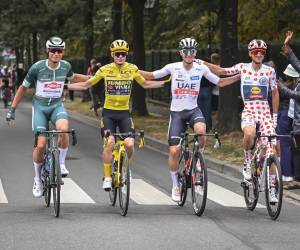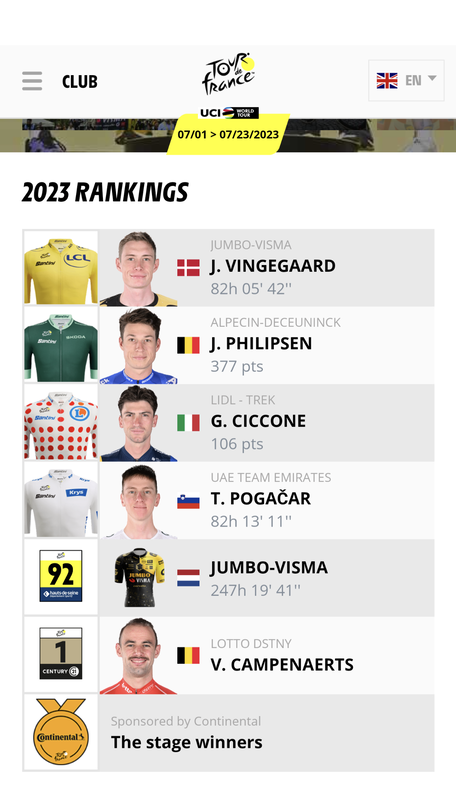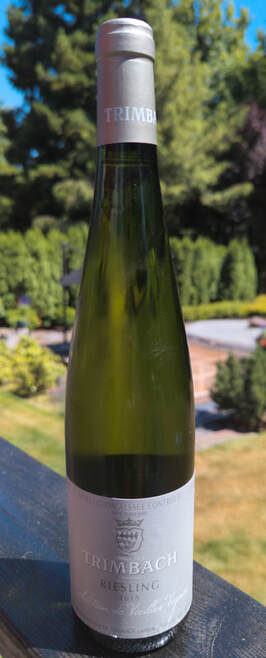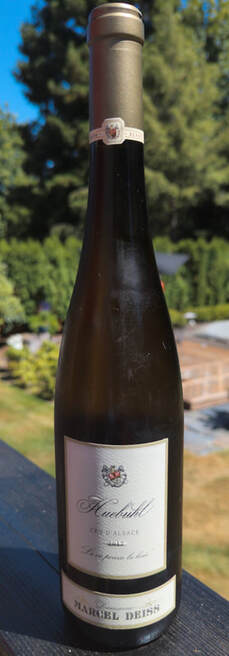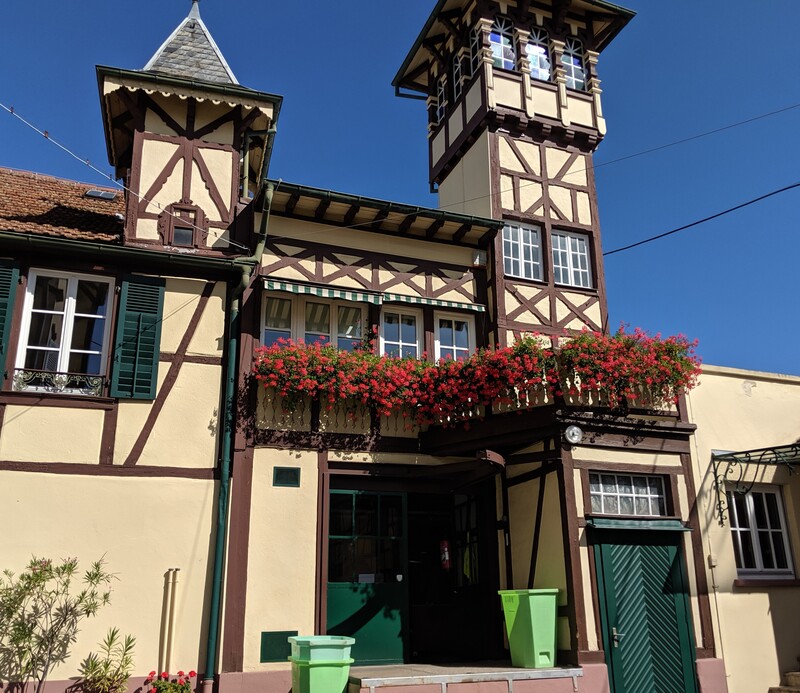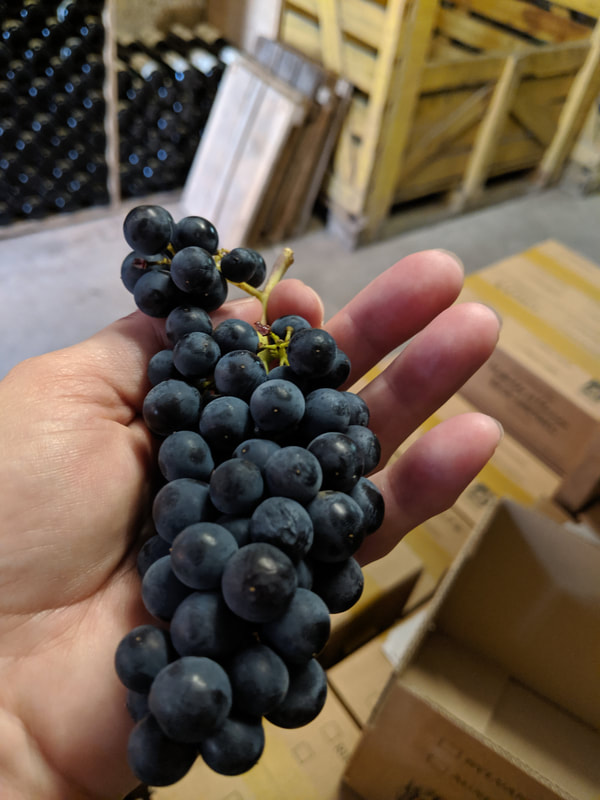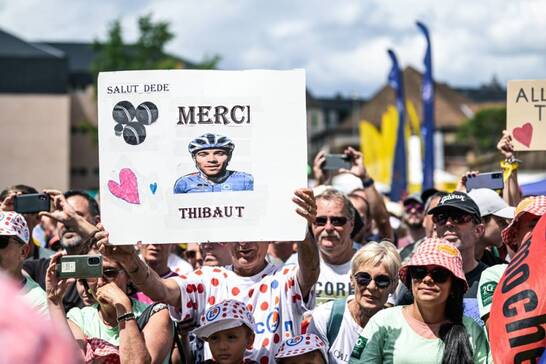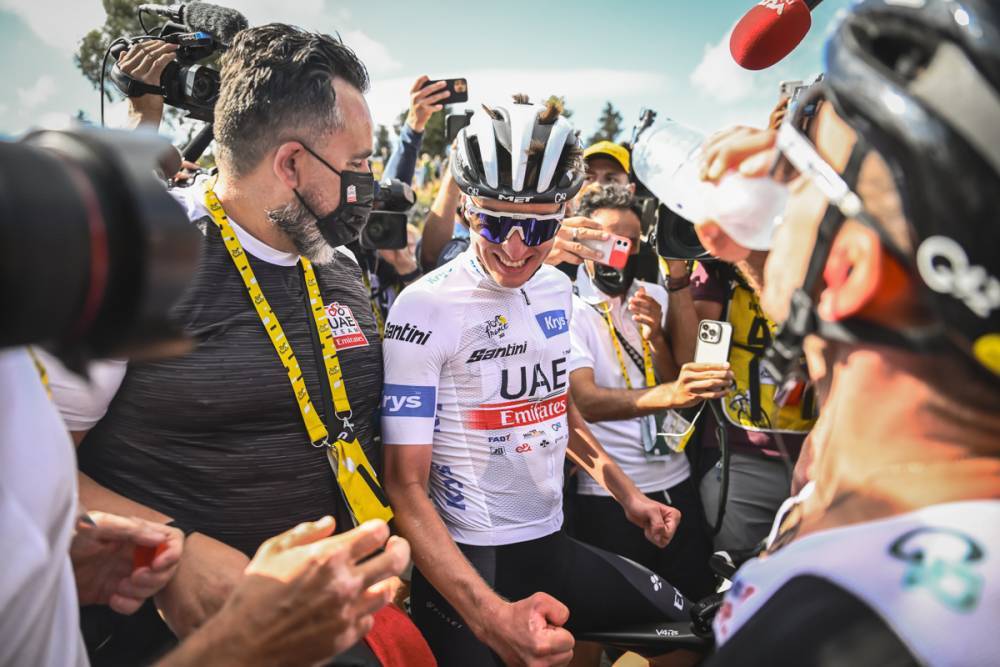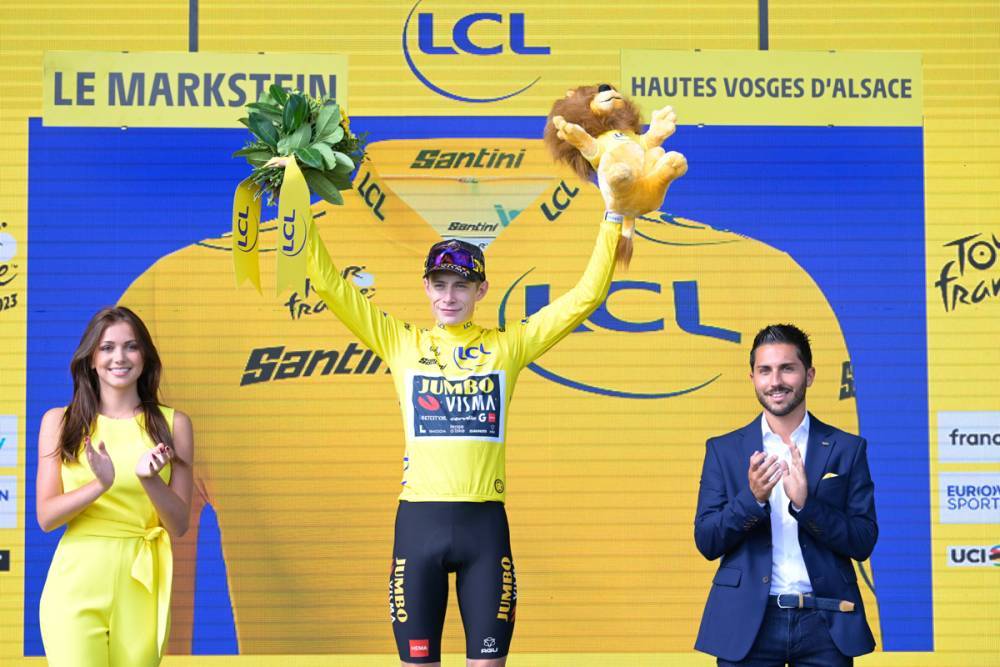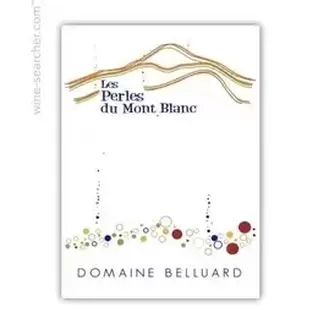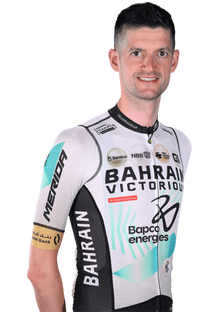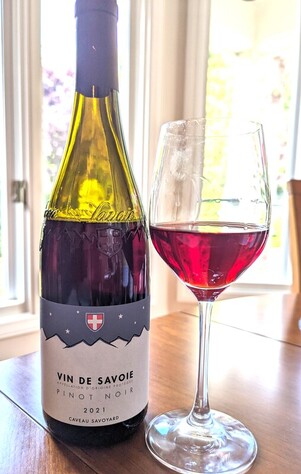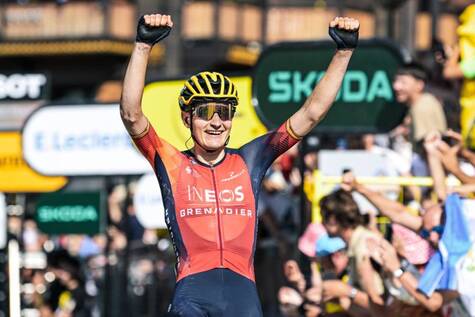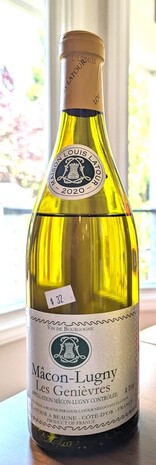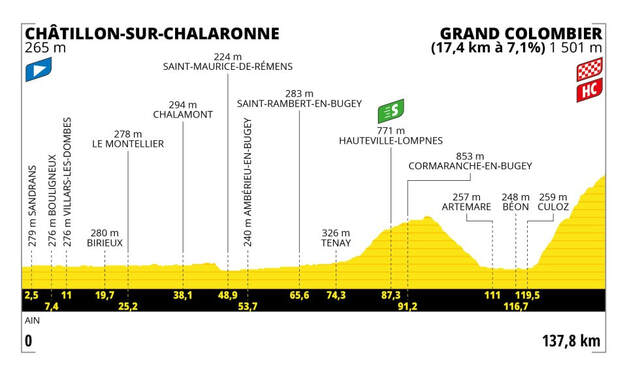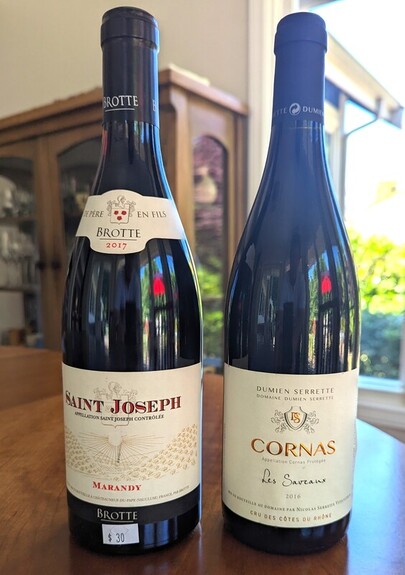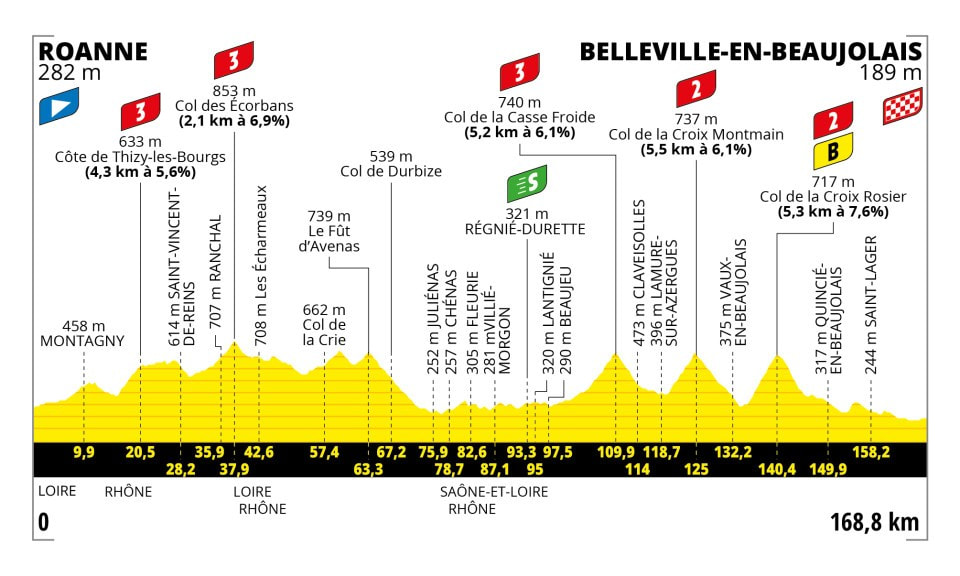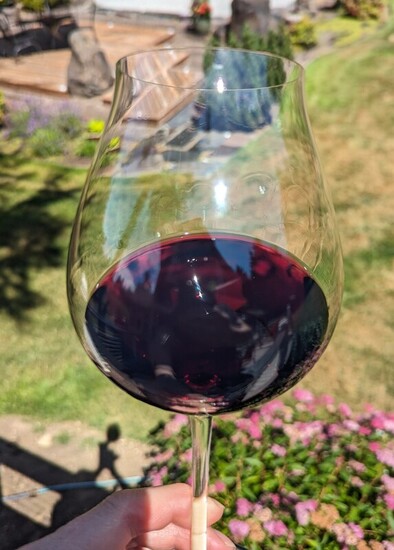|
My goal for this series ‘Harvest 2023’ is to discuss the physical and intellectual muscle required to make wines of quality and note. Adrice Wines in Woodinville, Washington, a women-owned winery with a woman winemaker, has agreed to allow me to follow winemaker Pam Adkins through the 2023 harvest. Pam Adkins, owner/winemaker, and Julie Bulrice, owner/sales and marketing, make award-winning wines from 20-plus grape varieties in multiple areas of the Columbia Valley in Washington State. A bit of context for Washington state wine: many winemakers purchase grapes from vineyard growers rather than owning vineyards. Usually, winemakers have long-term contracts with vineyards and collaborate to produce grapes that will develop into the wines the winemaker seeks to create. Vineyard managers and their incredible staff are farmers who grow grape vines and manage them in winter, spring, and summer into fall harvest. This relationship between winemaker and grower has been the model in Washington since the 1970s when wine production began to expand. During the end of July and August, wineries and vineyards are getting ready for their busiest time of year, the harvest of Washington state wine grapes. I asked several winemakers what it takes to prepare for harvest; universally, their first response was “cleaning.” Every piece of equipment and its components must be inspected to ensure it is in good working order, then thoroughly cleaned and sanitized to be ready when the fruit arrives in the winery. Comments were, “Cleanliness is the most important aspect of winemaking and the least glamourous.”; and “Cleanliness is next to godliness.” Keeping unwanted bacteria out of the winery is vital to making good wines. These are sentiments winemakers live by, but particularly during harvest. The staff inspects the crusher/de-stemmer gears and motors to ensure that grapes move through the first process without issues, then it's cleaned for harvest. The grape press is also inspected to ensure electronic controls and the press bladder work efficiently so grapes can be pressed to juice, meeting the winemaker’s specifications. Issues discovered with motorized equipment must be repaired quickly, so often, the winemaker or the cellar master is the repair person. In a winery that produces 3000 to 5000 cases of wine per year, you will likely find 3 or 4 pumps with 6 to 8 hoses of long lengths, many valves, and multiple collars of varying sizes, all required to move grape juice/wine between the press, fermenters, tanks, and barrels. All items must be in proper working order with no leaks or faulty parts; everything must be cleaned, sanitized, and stored until required. Continuing with the to-do list, in no particular order, stainless steel tanks must be cleaned and sanitized. At Adrice Wines, there are about eight tanks to be scrubbed clean and sanitized by someone climbing into the tank to do the work. Then there are the fermenters, each holding about 1 ton of grapes/juice. There are 15-20, and all must be cleaned and sanitized. Every time a vessel is emptied during harvest, or anytime for that matter, it must be cleaned and sanitized, including the hoses, clamps, collars, and valves. From August through December, it is never-ending work. Most tasks are completed in the winery facility. However, for Adrice Wines, picking bins are stored in vineyards. The picking bins are cleaned, sanitized, and distributed to vineyards where Pam purchases grapes for the vineyard workers to fill during harvest. This work often happens during Pam’s vineyard visits when surveying grape conditions and maturity. Harvest began at Adrice Wine’s custom crush operation on August 21st with Sauvignon Blanc from Red Mountain, an AVA near Benton City, WA. White wine grapes generally ripen before red grapes.
Next, we discuss preparations for harvest in the vineyard. Cheers! Introducing a deep conversation about the 2023 Washington State wine grape harvest. I am excited to delve into the 2023 vintage and discuss many aspects of what it takes to make wines of note. This 15-part series will discuss questions about winemaking, the winery, the grapes, and how they become wine. I will discuss these questions and others with Winemaker Pam Adkins of Adrice Wines, as well as other winemakers in Washington. I invite you to join the discussion with your comments below or on Instagram. Washington is a special place to grow wine grapes and make wine. We grow over 80 grape varieties planted on over 60,000 acres, in 20 AVAs (American Viticultural Area), with soils and climate different in each AVA. Washington is the 2nd largest wine grape producer in the United States and has over 1,000 wineries. The wine-grape harvest generally begins in late August. Usually, white wine grapes: Riesling, Sauvignon Blanc, Chardonnay, Albarino, Roussanne, and Marsanne, to name a few, ripen before the red wine grapes: Cabernet Sauvignon, Syrah, Merlot, Grenache, Malbec, Italian varietals, and many others. The 2023 growing season and harvest look ‘normal’ in some of the state’s AVAs and a bit unusual in other places; we will discuss this during the coming weeks. Join the discussion as we look at preparations in the winery, preparations at the vineyards, how the grapes get to the winery, how the magic happens, and grapes turn into wine. I will post weekly beginning August 24 through the end of harvest, a date sometime in mid-November. Farmers and winemakers are busy preparing for the harvest. I will highlight these preparations in my next post.
Cheers! July 23, 2023, STAGE 21 The Finalé The 2023 Tour de France ends today, July 23, 2023. Overnight the riders and all 1600-plus people supporting the race fly or drive from Le Markstein Fellering in the Alsace region in northeastern France to Saint-Quentin-En-Yvelines and the center of Paris for the Grand Finalé along the Champs-Elysées. On their way to the Finalé, they all passed through or over the region of Champagne. At the end of the day, almost everyone will raise a glass of Champagne to celebrate the winners and riders who finished a 3-week, 21-stage road race over 3404 KM. Champagne is wine made in the traditional method of Champagne. Creating a sparkling wine from a still wine, principally made from the grape varieties of Chardonnay, Pinot Meunier, and Pinot Noir. Unless the sparkling wine is from the Champagne region of France, it is not to be called Champagne; it can be called sparkling wine, Crémant, or sparkling wine made in the traditional method of Champagne, but not Champagne. When celebrating an event such as the Finalé of the Tour de France, one should most certainly drink Champagne. Today I opened a Champagne Harlin Pére & Fils, NV Cuvée Gouttes d’Or Rosé. A beautiful assemblage of 35% Chardonnay, 40% Pinot Noir, and 25% Pinot Meunier with fresh red raspberry, red cherry, and blackcurrant aromas bubbling to the delicate fruity round bubbly mouthfeel. The perfect summer celebration wine. Champagne Harlin is a grower of champagne. The winemakers are the vineyard owners. They have been growing chardonnay in Epernay, France, since 1969. The first release of the House Cuvée Goutte d’Or Rosé in 1999. All of the leaders of the 2023 Tour de France were known coming into the Finalé; they only needed to complete today’s stage to claim their wins. JORDI MEEUS was the somewhat unexpected winner of stage 21. Winning the sprint to the line on the Champs-Elysées over Jasper Philipsen. The overall race standings remained the same as yesterday. Congratulations to the winners of the race and all of the riders who rode and finished the 2023 Tour de France.
Santé THE WINE Stage 20 raced through the southern end of the Vosges Mountains. The Vosges Mountains are a low mountain range in northeastern France, home to Thibaut Pinot and the Alsace wine region. These are wines of place. Perfect for watching the Tour de France. Alsace's wines are produced under three key appellations: Alsace and Alsace Grand Cru for still white wines (both sweet and dry), and Crémant d'Alsace for sparkling. Almost all wine produced in this region fits into one of these three designations. The Alsace Grand Cru wines are produced from one of 51 favored vineyards distributed along the length of the region. Grand Cru vineyards and wineries produce wines marked by a cool climate, a variety of soil types, in a region that has been making wine for over 400 years. The wines are distinct from wines made in Germany, the US, or Australia. In Alsace, you find delicious white, rosé, and red wines, made in dry styles of Riesling, Gewurztraminer, Pinot Blanc, Pinot Gris, and Pinot Noir. The wines are bright with the ample acidity you should expect in a cool climate vineyard. Many wineries also produce delectable dessert wines with balanced sweetness and acidity. There are numerous Alsatian estate wineries imported widely into the US, such as Maison Trimbach, Maison Lucien Albrecht, Hugel et Fils. Alsace creates beautiful wines that are delicious upon release, and cellar very well. I love white wines from Alsace. If you have not had wines from Alsace, I hope you try one soon. They are great summer wines. Images by Lisa Kolick THE RACE Stage 20 is the penultimate stage of the 2023 Tour de France. Racing from Belfort in the south of the Vosges Mountain range to Le Markstein Fellering. These mountains are home to Thibaut Pinot and great wines from Alsace. Pinot lead the stage today over the penultimate climb of the day with thousands of fans cheering for him. Today, he received the award for most aggressive rider on the stage. Pinot has said this is his last Tour de France and he is retiring at the end of the season. Coming into Stage 20, Vingegaard led Pogacar by 7’48”. No one expected Pogacar to catch Vingegaard, but Pogacar did not give up the fight. At 5km Pogacar, Vingegaard Felix Gall, Adam Yates, and Simon Yates were the lead group. It looked as though Pogacar was setting up to make a move in the final 1km. Adam Yates took the lead in the group, Pogacar followed, then Vingegaard responded with an acceleration through the 2nd to last turn; coming out of that turn Pogacar took off and the sprint between the 2 race leaders was on. Pogacar put in an aggressive sprint and won the stage! Tadej Pogacar wins Stage 20. by A.S.O./Pauline Ballet Vingegaard wins TdF2023. By A.S.O./Charly Lopez Tomorrow is the final stage of the 2023 Tour de France. The entire race apparatus will travel from Le Markstein Fellering to the outskirts of Paris tonight. Their travels will take them up and over the region of Champagne. So, tomorrow I will write about Champagne and raise a glass and toast all of the riders of the Tour de France.
Santé THE WINE Today the race continues through the Savoie region of the French Alps. Given the significance of the climb to Mont-Blanc, I have chosen a sparkling wine, Domaine Belluard 'Les Perles du Mont Blanc' Brut from Savoie Ayze, France. Made from Gringet, a white wine grape from the region. The wine is fresh, young, and sparkling. This wine is available across the US at $30-$50. I hope you can find this wine near you, and enjoy it at your next celebration. THE RACE Off the riders race up Mont-Blanc one of the most famous mountains in Europe. Today team UAE controlled the peloton through much of the race. There were a few more crashes and then we were at the last 2km of the stage and the race was on. Wout Poels (team Bahrain Victorious) is the sole leader of the stage at 1km. He continues on to win Stage 15. A big congratulations to Poels, this is his 10th Tour de France and his first stage win! Behind Poels the same race is happening. Yates leads out Pogacar and Vingegaard, then Yates accelerates to take 2nd on the stage, but Pogacar can’t or doesn’t accelerate to follow. Now it’s the two race leaders coming across the finish virtually together, still just 10 seconds separate them. The day ends mostly as it started with Vingegaard in 1st, Pogacar in 2nd, and Rodriguez in 3rd. Tomorrow is a rest day and Tuesday, Stage 16, is the individual time trial. Enjoy the day off!
Santé! THE WINE Stage 14 raced through the Haute Savoie. The mountains of this stage fragment the vineyards throughout the region. These wines are not well known in the US unless found by travelers to the area or in wine research. Savoie is noted for its white wines, as the mountains’ cool climate makes it challenging for reds to ripen fully. Savoie wines are typically low alcohol, around 12% ABV in cool climate styles. I enjoyed tasting Pinot Noir from the Vin de Savoie sub-appellation: Caveau Savoyard, Vin de Savoie Pinot Noir, 2021. The color is much lighter than Pinot Noir from Burgundy, with aromas and flavors that are fresh and light with balanced textures and a midpalate finish. I encourage you to ask your local wine merchant for wines from this region. There are not a lot of imports from Savoie to the US, but if you find one, try it! THE RACE At the end of Stage 14, Vingegaard retained his lead in the overall race, Pogacar was second, behind by 10 seconds, and Rodriguez Cano moved into 3rd. Today’s race was a blockbuster. Accidents and breakaways highlighted stage 14. At 6.5km, an accident with many riders caused the race to stop for 30 minutes. Once the race restarted, numerous breakaway attempts occurred before Jumbo-Visma took the lead in the peloton. Jumbo-Visma pulled and pushed the peloton at a high tempo all day. Several more accidents happened during the race, taking several high-profile racers out. As with most days during the second week of the Tour de France, the stage was won in the last 2 km of the race. Adam Yates (Pogacar’s teammate) joined Vingegaard and Pogacar to lead them to about 1km; when Pogacar accelerated away from Vingegaard and took 2nd in the race, Vingegaard was 3rd. The winner of Stage 14 was breakaway rider CARLOS RODRIGUEZ CANO (team Ineos Grenadiers). Check out Stage 14 highlights.
Tomorrow the race will be in the high mountains again. Vingegaard and Pogacar are 10 seconds apart. This should be another barnburner of a stage. Sante! July 14 is BASTILLE DAY in France. On this day, the French celebrate the ideals of liberty, equality, and fraternity. Bastille Day commemorates the storming of the Bastille prison and the start of the French Revolution in 1789. THE WINE Today the Tour de France started east of Beaujolais, south of Macon (southern Burgundy), and north of the Northern Rhône regions, and finishes in the Jura Massif—so many wines to choose from, reds, whites, and more reds. The race finished on the massive climb of the Grand Colombier in the Jura mountains. The Maconnais is the vineyard surrounding the historic town of Macon, bordered in the east by the Saône River as it flows south to meet the Rhône. They grow predominantly Chardonnay with a bit of Gamay and Pinot Noir. Chardonnay from the Maconnais can spend some time in oak, but the Maconnais also produces unoaked Chardonnay. Unoaked Chardonnay is lively, with a purity of aromas and flavors like white peach, yellow apple, and pear, with good acidity, and a fresh finish. These types of Chardonnay are refreshing wines. Great to drink on a hot summer day watching the Tour de France Chardonnay from Jura is very different from the Maconnais. White, Rosé, and Red wines are made in the region. The reds tend to be much lighter and low alcohol than wines in the more well-known wine regions of France. The chardonnay I tasted was golden in color, with floral and apple aromas. The acidity was balanced with the fruit flavors creating a full-bodied texture and a long finish. Jura vineyards grow in several different soil types and a variety of elevations. I encourage you to ask your local wine store for wines from Jura. Enjoy! THE RACE Today’s stage is all about the last 50km of climbing. He last 1km is the culmination of the entire Stage 13; also the shortest stage in the 2023 Tour de France. MICHAL KWIATKOWSKI won the stage ahead of Maxim Van Gils with Tadej Pogacar in 3rd and Jonas Vingegaard in 4th and Tom Pidcock 5th.
Pogacar takes the 4 second time bonus and a 5 seconds from race leader Jonas Vingegaard. Jonas Vingegaard is first and Tadej Pogacar is in second place. These mountain stages often decide the race. I am not sure about this year; it has been a race that I have not seen in my 50 years of watching the Tour de France. Today’s race highlights. Tomorrow is another day in the Jura and Savoie. Santé THE WINES Racing through Beaujolais, the Tour de France skirted one of my favorite wine regions, the Cote du Rhone. Wines of the Cote du Rhone are characterized as middleweight red blends based on Grenache, Syrah, and Mourvèdre. The wines of the north Rhone Valley are more Syrah and lean more towards a cool-climate style. They show good structure and notes of black cherry and fresh pepper (examples include those from Guigal and Chapoutier). The southern Rhone Valley blends are more Grenache with a more warm-climate style. They are a bit fruitier with a softer structure. These are some of my favorite wines. I hope you will try a wine from Cote du Rhone. The wines can be of good value, with styles for many palates. THE RACE
Today's race was designated a hilly stage, but as you can see on the profile graphic, there are numerous categorized climbs. This stage looks like it would be very challenging. But, at the beginning of the day, the pundits thought this would be a day for a breakaway and for the GC teams to save their strength before the Alps. The race did not play out as expected. Stage 12 saw several attacks and accelerations before the peloton consolidated, with team Jumbo-Visma trying to control the peloton and breakaways. Despite Jumbo-Visma's efforts, numerous riders took off to establish breakaways on each climb. The chase group, with the race leaders, worked hard to keep the breakaways in check and not let them get too far ahead of the leaders' group. Watching this stage was exhilarating, with situations changing often, sometimes every 5km. The race also saw Thibaut Pinot out front in the last breakaway of the day. He has shown he's not done racing yet. Pinot has said he is retiring at the end of the season. Check out the highlights of today's fascinating stage. Today's winner was ION IZAGIRRE INSAUSTI (team Cofidis) from the Basque region in Spain. These days in the middle of the Tour de France are difficult on a difficult course. Team strategy and tactics are on full display, surprising the pundits daily. The race continues tomorrow in the Jura Massif near Italy and Switzerland. The stages pass through the Jura and Savoie wine regions. Join me tomorrow. Sante! THE WINE The riders raced north to a sprint finish in Moulin today. The sprint finish was spicy, like a well-aged Beaujolais Cru wine. The grape is Gamay. The AOC is Moulin-A-Vent. The entire wine region is the Beaujolais, just south of Burgundy. Beaujolais is known worldwide for Beaujolais Nouveau, a very young, light, fruity wine released in November of the harvest year, but Beaujolais is so much more than that. Try a Beaujolais Cru, a wine from Moulin-A-Vent with a bit of age. These wines are well-priced and well-regarded by critics. Wines in Beaujolais made in the Burgundian style are usually a great value, meaning it drinks better than its price. A Beaujolais Cru will use a bit of oak, creating rich and beautifully structured wines with elegant tannins. Enjoy these wines with roasted meats, fall stews, and a rich fish dish. Tomorrow the race will be in a different part of Beaujolais. More great wine!! THE RACE Leaving CLERMONT-FERRAND, we find the race still in the area around the Puy de Dome. The race started, and 3 riders took off straight away, but the peloton kept the lead out within 2-3 minutes all day. While they call this a flat sprint stage, there were category climbs in the first third of the race, then small hills and flatter but more narrow roads to finish the day. The race experienced head, tail, and crosswinds through the fields and hills; there was a bit of rain with 40km to go. This type of hilly stage and the team tactics employed, allowed many riders to recover energy, even though the peloton was racing at about 25 mph all day. The recovery comes from the tempo being constant throughout the race. The accelerations and higher speeds make riders exert much more energy. The last 40km of the race was hilly with riders and teams setting up for the final sprint for the stage win. The last 1km really was the race for the finish with a bunch sprint rather than a lead-out sprint. In this last kilometer, each sprinter was moving through the bunch, drafting for a position, with about 150m to the finish, riders are hitting speeds over 65kph. Dylan Groenewegen is leading the sprint, then Jasper Philipsen accelerates past and wins the stage. The standings for the race remain the same for the top 5 riders. Tomorrow will find the race riding through more of the Beaujolais wine region and the race will go through one of my favorite wine regions, The Northern Rhone. They will be racing from ROANNE to BELLEVILLE-EN-BEAUJOLAIS, categorized as a hilly stage.
Enjoy a Moulin-A-Vent Beaujolais red wine. Sante THE WINE
Today was not a wine day. The race left the forests the other day and raced onto the plateaus and hills of the Massif Central and Puy de Dome. Tomorrow the race heads towards the Moulins and the region of Beaujolais. There will be much to write about. THE RACE Circumnavigating the Puy de Dome on its plateaus and up and down long hills, we saw an explosive race today. Out of the start, we saw a breakaway that broke apart the peloton. These explosive accelerations happened several times throughout the race. This crazy race comes following a rest day. Rest days can cause issues for some riders, and some riders respond well. The last 5km was the race for the finish with games of cat and mouse for the lead group and the chase group. Pello Bilbao (Team BAHRAIN VICTORIOUS) wins the stage. The win was emotional for Bilbao and his team, as they lost teammate Gino Mäder. Mäder died following a crash in the Tour de Suisse in June. Santé |
|
© Grapes and Still Waters, 2019-2023
We do not sell or share your information.
We do not sell or share your information.
